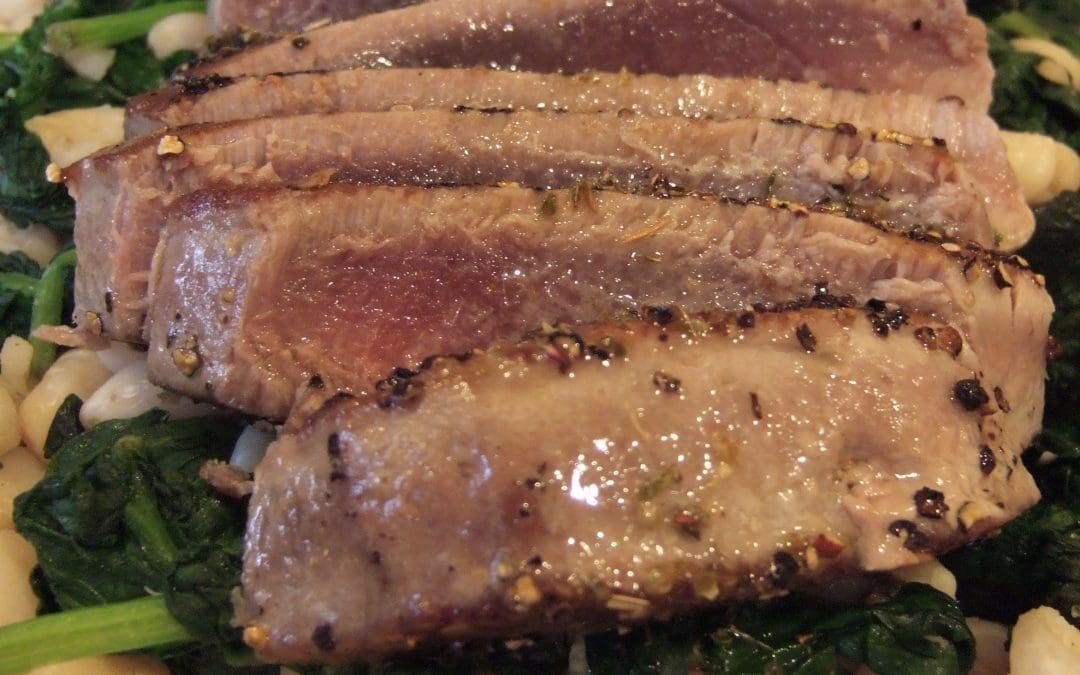I adore tuna and I would eat it once a week if it weren’t $549/lb. Expensive fish makes me nervous. Plus I’m a native Midwesterner so cooking fish well comes about as naturally as surfing. But I love it so I keep trying to perfect my skills.
This recipe was so good and exactly the way I like to eat tuna: seared and sliced with a simple, herb-y vinaigrette on top. I was, however, mystified by the part of the recipe that tells you to take your 1.5 lb. piece of fish and “cut it into 4 equal pieces…to make 4 rectangular logs.” Really have no idea what that meant and “rectangular logs” did not sound like they would look pretty on a serving plate so I just ignored it. As a result, I had to cook the steak a little longer but it was fine.
The other problem was that Hesser insists that “canned beans won’t cut it” in this recipe and yet there are no instructions for cooking beans in the entire book. Not that it’s hard but when you rely on canned beans for most of your bean-related dishes, you need some guidance. It seems like it would have been a simple thing to include two sentences on how much water to soak the beans in (4 quarts per 1 pound of beans plus 3 tablespoons salt), for how long (8-24 hours), and then how long to simmer them (45-60 minutes). See?
And you know what? After eating the finished product I think you could use canned beans. Please don’t tell Amanda.
Nevertheless, it all turned out brilliantly and the beans with the spinach were divine — I would have been happy with just that part of it (and of course that’s what my vegetarian daughter ate).
Seared Tuna in Black Pepper Crust is on page 409 of The Essential New York Times Cookbook and can also be found right here.


Hi Jane,
Just checked out your site and it looks like a great idea. I’d love to be linked. What do you need me to do?
Thanks!
Kate: Think you could get your mom to taste this one? (Probably not…)
nancy
Wow, this looks GREAT! I do not make fish let alone seared tuna, but you make it look totally doable so guess what? I am going to give it a go! And great reading as always.